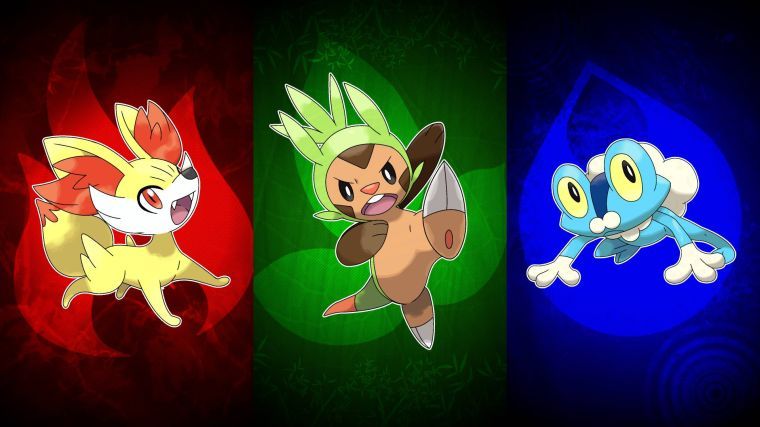
“Rather than getting your starter Pokémon from a professor, for example, players are given a choice — between Fennekin, the fire-type fox Pokémon; Froakie, the water-type frog Pokémon; or Chespin, the grass-type Pokémon that resembles a chipmunk with a green hat — from an in-game “friend” of the player’s character.” —Zoë DiGiorgio
It has been 15 years since Pokémon Red and Blue first came out in the United States. Yet if students at this university were asked what their first starter Pokémon was, many would quickly enter into an intense debate about the merits of Charmander, Bulbasaur or Squirtle.
Though it was expected that Pokémania would fade away like boy bands and Beanie Babies, Pokémon has retained many loyal fans among those who grew up with the series. With the simultaneous worldwide release of Pokémon X and Y, the newest versions of the classic game, the series is proving that it is still a major force in the video game industry.
In College Park, students such as junior Japanese major Girado Smith II lined up for several hours at the GameStop store on Route 1 on Friday night for the midnight release of the game. Arriving at the store at 9:45 p.m. to get his hands on a copy of X and Y, Smith was one of the first 15 customers to receive the game. He said he didn’t mind the wait, playing games while he waited and talking with other Pokémon fans in line about the series.
Appearing for the first time on the Nintendo 3DS with X and Y, the game dynamics have changed immensely since the days of Red and Blue (or even Yellow, for those who wanted a Pikachu to follow them around). The series first added color in Gold and Silver, which were released in the U.S. for Game Boy Color in late 2000. By virtue of appearing on the 3DS, the newest incarnations of the series now bring the action to the third dimension with 3-D Pokémon battles.
Visually, X and Y are the most advanced games of the series. In past games, the landscapes and character sprites were viewed from an overhead perspective. Now the series features more advanced graphics, which add dimension to the game by further stretching 3DS system’s capabilities. In X and Y, players explore the more interactive, dynamic world of the Kalos region, which is modeled after France.
Senior computer science and philosophy major Charles Zhuang praised the game’s updated graphics and use of 3-D to improve the battle sequences. Zhuang also enjoyed the character customization feature, which allows players to change the appearance and wardrobe of their characters. This is the biggest advance in character creation since the series first allowed players to choose the gender of their characters in Crystal.
Though the Pokémon story format has been mostly preserved through the series, X and Y bring a few new twists to the table. Rather than getting your starter Pokémon from a professor, for example, players are given a choice — between Fennekin, the fire-type fox Pokémon; Froakie, the water-type frog Pokémon; or Chespin, the grass-type Pokémon that resembles a chipmunk with a green hat — from an in-game “friend” of the player’s character.
Professor Sycamore, who is this generation’s incarnation of a tree-themed Pokémon scientist, later gives players the nostalgic choice between Charmander, Squirtle or Bulbasaur. These classic Pokémon even have an X and Y update; the games now offer in-battle “Mega Evolutions” for Charizard, Blastoise and Venusaur, which differ between versions.
Though the story might feel familiar to those who have played Pokémon games in the past, there are many new gameplay elements in this version, improving even on last year’s Black 2 and White 2. The game offers two new game modes, “Pokémon-Amie” and “Super Training.” In “Pokémon-Amie,” players get to feed, pet and interact with their Pokémon a la Nintendogs. In “Super Training,” players can raise individual stats of their Pokémon through several minigames — a nice respite for those tired of battling.
The game also takes advantage of the Wi-Fi and direct connection compatibility of the 3DS. This enables players to play against friends using their unique “Friend Codes” and passersby alike virtually through the 3DS. Though trading and battling with other Pokémon players is not new in the series, the ease of connection through the 3DS opens up the world and creates a new game experience.
Zhuang said players returning to the series will still find something to enjoy because of the way the game has placed new emphasis on previously overlooked elements, such as effort value points, which are important when leveling up a Pokémon’s stats.
“The game still has the same formula, but [players] will be introduced to something old in a different, newer perspective,” Zhuang said.
Rather than rushing through several Gyms — where trainers go to battle gym leaders’ Pokémon to progress through the game — in a few hours, veteran players have commented that after many hours of playing, they are still barely beyond the first Gym. X and Y offer a variety of activities beyond the basic storyline, giving players time to explore the games’ new elements.
“I think Pokémon has been doing a really good job in the way that its succeeding games keep building upon their predecessors, and they keep getting better and better, “ Zhuang said.



